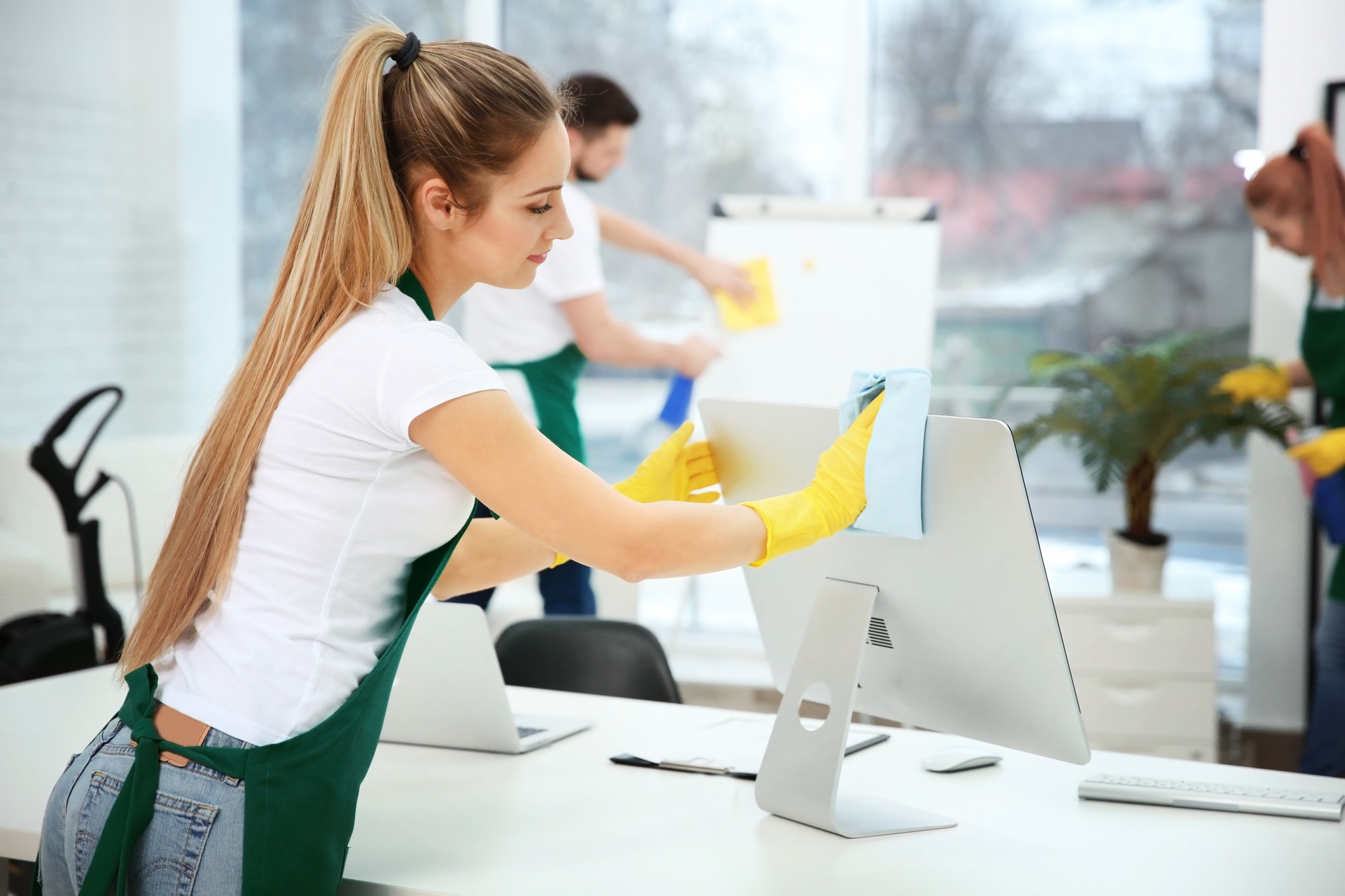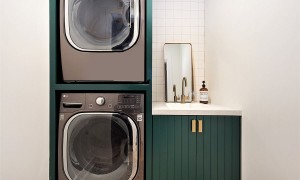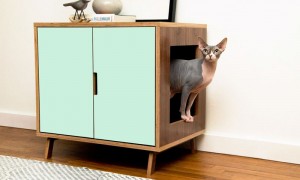There’s a big difference between cleaning and sanitizing a space. That difference has never mattered more than it does with the outbreak of COVID-19 around the world.
It’s important to follow CDC recommended COVID guidelines to properly disinfect any workplace. Here is a guide to disinfecting for the office as employees begin returning to work.
What Are COVID Guidelines for Returning to Work?
Following a long stretch of quarantine, many Americans are returning to work. The standard COVID guidelines for reopening offices include these suggestions.
Temperature Checks
It’s important for employers to provide regular temperature checks in the workplace. Anyone with a fever shouldn’t be permitted into the office.
No-contact temperature checks are the best option to avoid spreading contamination through the thermometer. Daily temperature checks help track the potential spread of the disease by alerting employers there are potential COVID cases within the building.
Physical Distancing
Physical distancing is another important guideline for returning to work. While not every work environment can accommodate the recommended distance of 6 feet apart, keeping as far away as possible is a great way to minimize the spread of COVID within your office.
Why does physical distancing matter? It decreases the chances that you’ll inhale a sick person’s respiratory droplets. The estimated spray of droplets after a sneeze or cough is around 6 feet.
Cloth Face Coverings
Another way to avoid spreading COVID is to wear a cloth face covering. Employees can stop their respiratory droplets from entering the personal space of those around them by wearing a well-fitting face mask.
There are COVID guidelines to choosing a face covering. First, the CDC warns people against counterfeit products that claim to be medical-grade or N-95.
These are often fake products as there is a global shortage of medical-grade N-95 masks. Healthcare workers are prioritized in the distribution of these masks.
Disinfection of Common Areas
Most workplaces are following guidelines for additional cleaning to get the office prepared for employees returning to work. Additional disinfecting is recommended for high traffic space and any shared spaces in the office.
These areas include the lobby, kitchen, copy room and other spaces employees frequent. The size of the space doesn’t matter.
Even a supply closet could be subject to disinfection guidelines if it’s used a lot by employees during the day. Read more now about disinfecting the right shared spaces.
Protective Measures During Business Travel
COVID guidelines extend beyond the office. Some companies are providing employees with protective gear to use while they travel.
This decreases the chance they’ll bring any illness back from any other cities with serious COVID outbreaks. Depending on where you travel, there might also be a required self-quarantine for two weeks before returning physically to the office.
Cleaning vs Disinfecting
Everyone wants to work in a clean environment. Less clutter often means fewer distractions.
But COVID guidelines don’t address how neat you are at work. They address whether the pathogens are killed daily in your office.
Has your company taken all the steps to reduce shared airflow between employees? Disinfecting is the process of killing viruses and bacteria from surfaces.
There are many cleaners on the market that aren’t EPA approved disinfectants. These products get rid of dirt, grime, and sometimes germs.
They can make a surface look polished but don’t make it safe to touch if it’s been used by a person infected with COVID-19. Check out the EPA’s N-List to learn which products are safe to use as disinfectants.
The list includes commercial, medical, and residential grade products. Even if your office cleaning products are on the approved list of sanitizers their results aren’t guaranteed unless they’re used according to the directions.
How to Sanitize Shared Spaces
Once you have your commercial grade EPA approved disinfectants in place, prioritize the place in the offices where COVID is more likely to spread. Since COVID is RNA, it can’t replicate itself without a human host.
That means the time it can live on certain surfaces is limited. Research shows that COVID lives longest on hard surfaces and on the outside of surgical face masks.
If your office is providing surgical masks to employees, have your cleaning team discard and masks left behind using gloves. It’s probably a good idea to then wash your gloved hands so that you don’t spread any germs between surfaces.
Studies show that COVID can live on hard surfaces for up to 7 days. This means you’ll have to carefully disinfect these surfaces as often as possible.
Light switches, elevator buttons, and door handles should be sanitized throughout the day as visitors come in and out of the office.
Hard surfaces like the floor, desks, and walls should be sprayed with a sanitizer. EPA approved products must be left on the surface for the minimum time listed on the directions.
This helps ensure the virus is killed before the sanitizer is wiped away. COVID-19 doesn’t live long on soft surfaces like cloth or paper, but it’s still a good idea to lightly spray upholstery in your waiting room to kill any germs.
Following CDC Guidelines for Cleanliness
COVID guidelines are helpful in protecting your team from the highly contagious coronavirus. While you might not be able to implement all of the CDC guidelines for returning to work, even a small amount of prevention helps to reduce the spread.
Be sure to follow the EPA recommendations on sanitizing your workspace. Their approved product list can help you choose safe and effective disinfecting products that aren’t harmful to your respiratory health.
For more information and tips, check our blog for updates.



























